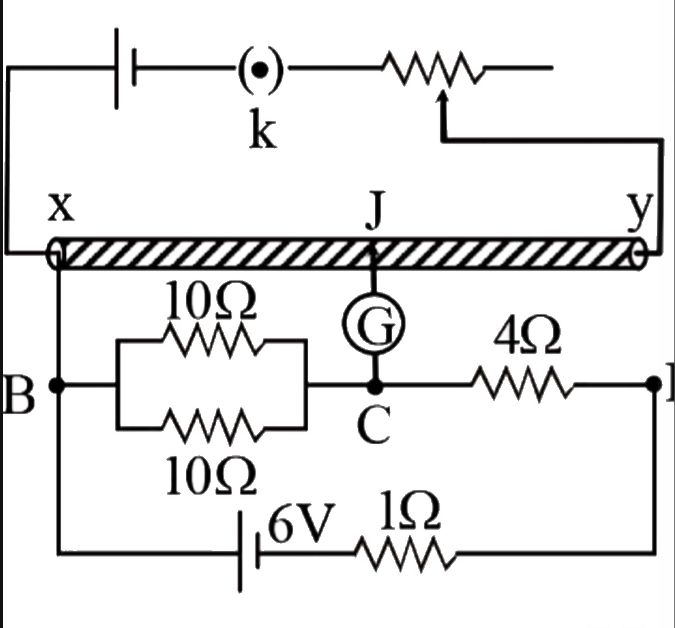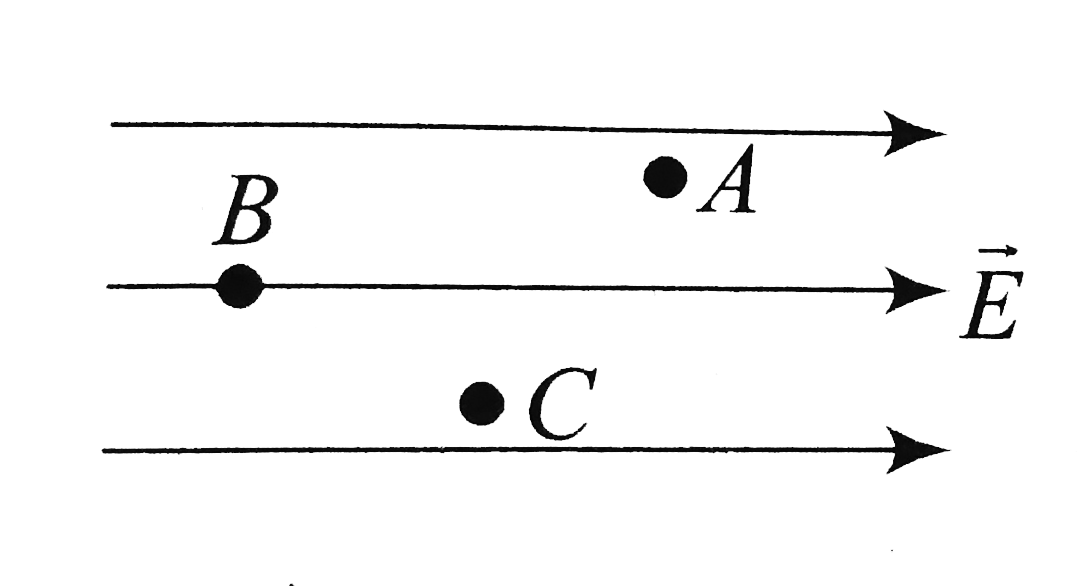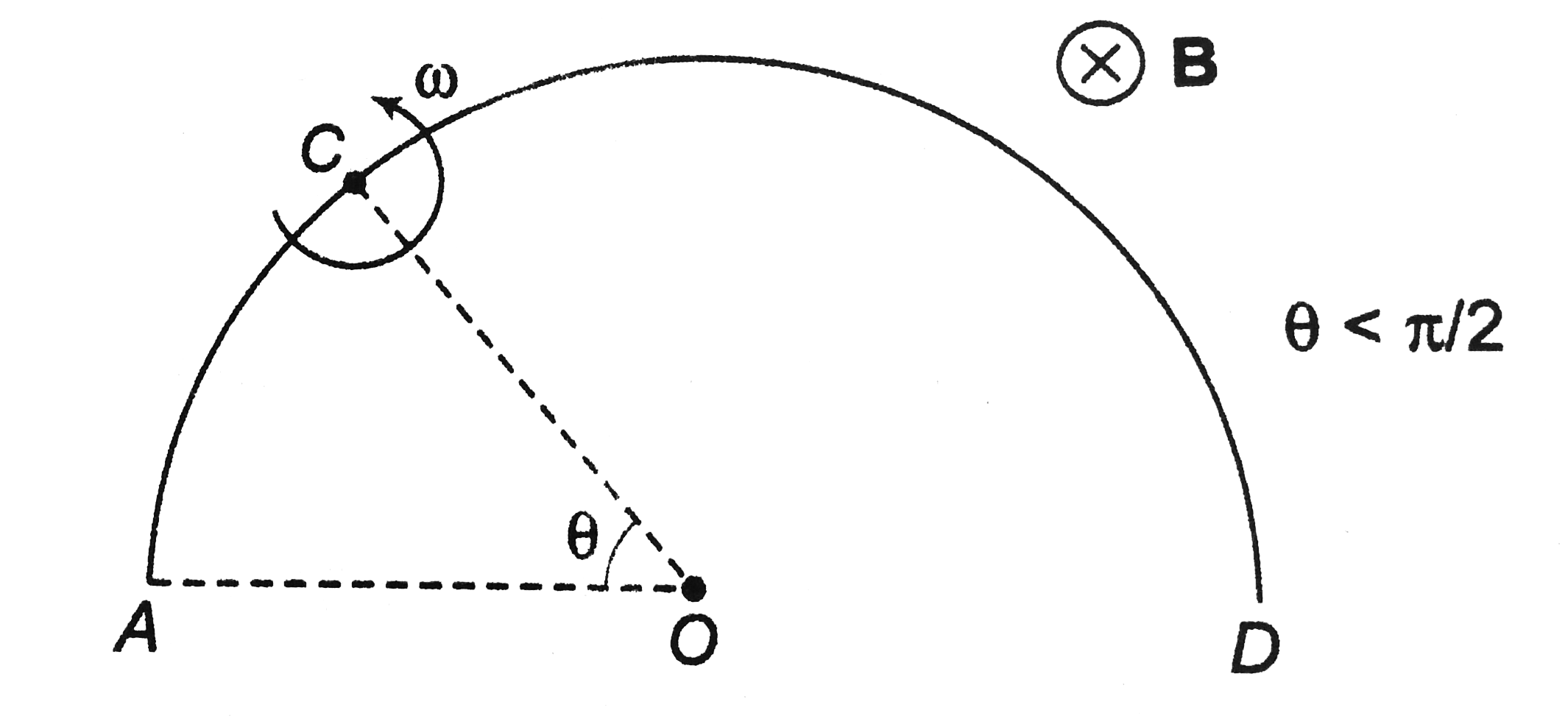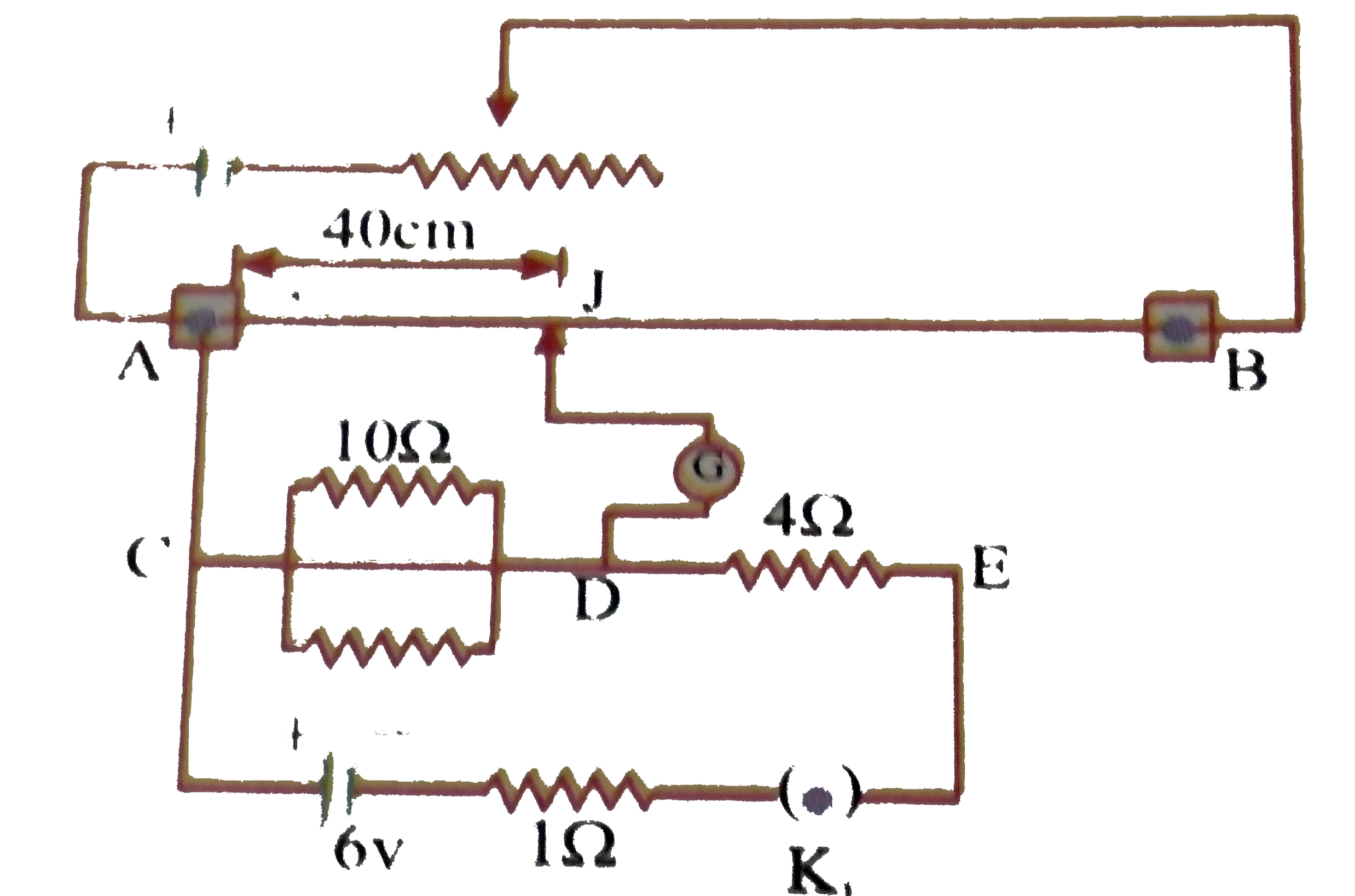The potential gradient long the length of a unifrom wire is 10volt/meter. B and C are the two points at 30cm and 60cm point on a meter scale fitted along the wire. The potential diffenence between B and C will be
3 volt
0.4 volt
7 volt
4 volt
The correct Answer is:A
Potential gradient = Change in voltage per unit length
∴10=V2−V130/100⇒V2−V1=3 volt
Topper's Solved these Questions
Similar Questions
The potential gradient along the length of uniform wire is 10 Vm−1. The length of the wire is 1 m. What is the potential difference across two points on the wire separated by 25 cm?
View SolutionIf the balance length corresponding to points B and C is 40 cm on the potentiometer wire, the balance length corresponding to point C and D is

View Solution
Knowledge Check
The potential gradient along the length of a uniform wire is 10 volt / metre. B and C are the two points at 30 cm and 70 cm point on a metre scale fitted along the wire. What is the potential difference between B and C ?
A3 VB4 VC5 VD6 VThe potential gradient along the length of a uniform wire is 5 V/m. There are two points on the same wire at a distance of 20 cm and 40 cm from initial end of the wire. The potential difference between these points is
A1VB2VC3VD4VA,B and C are three points in a unifrom electric field. The electric potential is
 AMaximum at ABMaximum at BCMaximum at CDSame at all three points A,B and C
AMaximum at ABMaximum at BCMaximum at CDSame at all three points A,B and C
A potentiometer has uniform potential gradient. The specific resistance of the material of the potentiometer wire is 10−7 ohm-meter and the current passing through it is 0.1 ampere, cross-section of the wire is 10−6m2. The potential gradient along the potentiometer wire is
View SolutionA uniform wire of resistance per unit length λ is bent into semicircle of radius a. The wire rotates with angular velocity ω in a vertical plane about a orizontal is passing through C. A uniform magnetic field B exists in space in a direction perpendicular to paper inwards.

a. Calculate potential difference between points A and D. which point is at higher potential?
b. If points A and D are connected by a conducting wire of zero resistance, find the potential difference between A and C.
View SolutionIn a meter bridge, the length of the wire is 100 cm. At what position will the balance point be obtained if the two resistances are in the ratio 1:3?
View Solution
In the circuit shown in fig. the potential difference between the points C and D is balanced against 40 cm length of potentiometer wire of total length 100 cm. In order to balance the potential difference between the points D and E The jockey to be pressed on potentiometer wire at a distance of
View SolutionThe lengths of two rods measured by a meter scale are 50.0 cm and 10.0 cm, respectively. The least count of meter scale is 1 mm. Which measurement between two will be more correct?
View Solution

